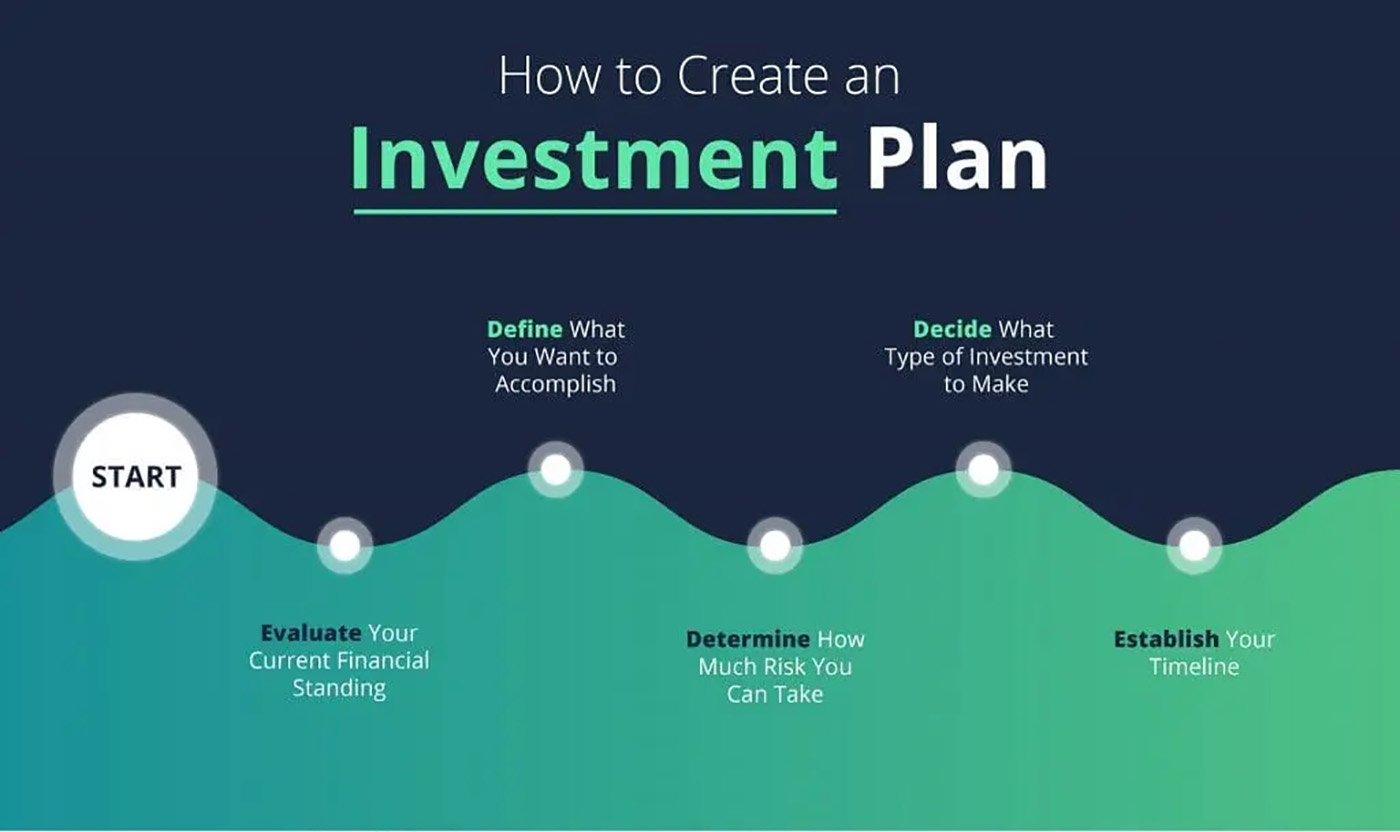As we move further into 2024, the global economy continues to be an unpredictable landscape. Inflation, fluctuating interest rates, geopolitical tensions, and evolving industries all present both challenges and opportunities. If you’re looking to build long-term wealth and secure financial independence, setting clear and achievable investment goals is one of the most crucial steps you can take. Understanding how to plan, measure, and achieve your investment returns can seem daunting at first, but with the right approach and mindset, it’s entirely manageable.
In this article, I will walk you through the process of scientifically planning your investment returns—how to set realistic goals, choose the right investment vehicles, track your progress, and, most importantly, adjust your plan as circumstances evolve. Whether you’re new to investing or have been in the game for years, having a clear strategy will allow you to navigate the inevitable market fluctuations and work towards the wealth you deserve.
1. The Importance of Setting Clear Investment Goals
Before diving into the specifics of how to plan for investment returns, let’s discuss why goal-setting is essential. Investment goals are the foundation upon which your entire portfolio will be built. Without clear, actionable goals, your investments could lack direction, causing you to make emotional, impulsive decisions when markets fluctuate.
Why Set Goals?
- Clarity: Clear goals provide a roadmap, helping you stay focused and avoid distractions.
- Accountability: With goals in place, it’s easier to track your progress and adjust your strategy if needed.
- Motivation: Having concrete objectives—whether it’s saving for retirement, buying a home, or funding a child’s education—keeps you motivated when markets become turbulent.
- Risk Management: Knowing your goals allows you to define your risk tolerance and tailor your portfolio to align with your objectives.
The first step to planning your investment returns is understanding what you’re investing for. The clearer your objectives, the more precise your strategies can be.
2. Defining Your Investment Goals: What Are You Investing For?
Investment goals are not one-size-fits-all. Everyone’s financial situation and aspirations are different, and it’s important to start by identifying your own specific objectives. Some common types of investment goals include:
- Retirement Savings: Most people’s primary long-term goal is to accumulate enough wealth for retirement. This might mean saving for a pension fund or contributing to an Individual Retirement Account (IRA) or 401(k) plan.
- Purchasing a Home: Some may be investing with the goal of saving for a down payment on a home, or for the home’s eventual mortgage payments.
- Funding Education: Whether it’s for your children’s future or your own, investing in education is a critical goal for many people.
- Building Wealth: Some investors may simply want to build wealth to have financial freedom, without a specific target in mind. This includes growing an emergency fund or accumulating enough assets to provide passive income through dividends, interest, or real estate.
- Charity or Generational Wealth: Another long-term goal could be to leave a legacy for future generations, or to donate part of your wealth to charitable causes.

How to Define Your Goals Clearly
When setting investment goals, follow the SMART framework—making your goals Specific, Measurable, Achievable, Relevant, and Time-bound:
- Specific: Clearly state your financial goal. For example, “I want to save $500,000 for retirement.”
- Measurable: Define how you will track your progress. This might include monthly contributions or tracking your investment growth.
- Achievable: Set realistic goals based on your current financial situation and market conditions.
- Relevant: Ensure the goal is aligned with your broader life objectives.
- Time-bound: Set a timeline for when you want to achieve this goal.
3. Assessing Your Risk Tolerance
Once you have clear goals in place, the next step is assessing your risk tolerance. Your risk tolerance is essentially your ability and willingness to withstand market volatility without panicking. Understanding your risk tolerance is critical in choosing the right investment vehicles and in ensuring that your strategy aligns with your emotional and financial capacity for risk.
How to Assess Risk Tolerance
- Time Horizon: The longer your investment horizon (i.e., the more time you have before you need the money), the more risk you can typically afford to take. For instance, if you’re 25 and saving for retirement 40 years down the line, you may be more comfortable with stocks and higher-risk investments.
- Financial Situation: If you have significant debt or no emergency fund, your risk tolerance may be lower, and you may want to lean toward more conservative investments.
- Personality: Some people are naturally risk-averse and cannot stomach significant losses, while others are more comfortable taking on higher-risk investments for the potential of higher returns.
4. Crafting Your Investment Strategy
Once you’ve defined your goals and assessed your risk tolerance, it’s time to develop a strategy. This includes deciding how much to invest, where to invest, and how to track progress toward your goals.
Determine Your Asset Allocation
Asset allocation is the process of deciding how to distribute your investments among different asset classes (stocks, bonds, real estate, etc.) to best achieve your objectives. This is a key component of managing risk.
- For long-term goals: If you have a long time horizon (i.e., retirement in 20-30 years), you might allocate more of your portfolio to stocks for higher growth potential, accepting the short-term volatility that comes with it.
- For short-term goals: If you are saving for something in the near future (like a down payment on a house in 5 years), you might want a larger portion of your portfolio in bonds or cash equivalents, as these are more stable.
Choose the Right Investment Vehicles
The next step is to decide where to put your money. Based on your risk tolerance and goals, different investment vehicles may be more appropriate:
- Stocks: For high growth potential, though they come with greater volatility.
- Bonds: For more stability, providing steady interest income, but generally offering lower returns than stocks.
- ETFs & Mutual Funds: These are a good option for diversification. An ETF (Exchange-Traded Fund) or mutual fund can offer exposure to a variety of stocks, bonds, or other asset classes, reducing the risk of putting all your eggs in one basket.
- Real Estate: Investing in property can provide steady income through rentals and the potential for capital appreciation over time.
- Retirement Accounts (IRAs, 401(k)s): These offer tax advantages for long-term retirement savings and can be ideal for investors looking to reduce taxable income while saving for the future.
Stay Disciplined with Regular Contributions
One of the most important aspects of achieving your investment goals is consistency. Regular, automated contributions to your investments—whether monthly or quarterly—ensure that you stay on track. Dollar-cost averaging (DCA) is an effective method, where you invest a fixed amount at regular intervals, regardless of the market’s ups and downs.
Rebalancing Your Portfolio
As markets move, your asset allocation will inevitably shift. For example, if stocks have performed well and now make up a larger percentage of your portfolio than originally planned, you may need to sell some stocks and buy more bonds or other assets to return to your target allocation. Regularly rebalancing your portfolio helps maintain your risk profile and investment strategy.
5. Measuring Progress and Adjusting Your Plan
Once your plan is in motion, it’s important to track your progress regularly. Use investment tracking tools or online platforms to assess how well your portfolio is performing relative to your goals. Websites like Morningstar (www.morningstar.com) or Yahoo Finance (finance.yahoo.com) offer great tools for monitoring investment performance and understanding market trends.
Assessing Performance
- Review your portfolio quarterly: Are you on track to meet your goals? If not, adjust your strategy.
- Compare returns to benchmarks: For example, compare the performance of your equity holdings to the S&P 500 index or your bond portfolio to an aggregate bond index.

Adjustments Based on Life Changes
Your goals or risk tolerance might change over time due to life events such as marriage, the birth of a child, or nearing retirement. Revisit your investment goals at least annually to ensure they still align with your current life situation.
6. Recommended Resources for Investors
For those looking to build their investment knowledge, several online platforms can help you develop a better understanding of investing:
- Investopedia (www.investopedia.com): A comprehensive resource for beginners and experienced investors alike. It offers articles on everything from basic investment terms to advanced strategies.
- The Motley Fool (www.fool.com): Offers stock recommendations, market insights, and educational content to help investors make informed decisions.
- Bloomberg (www.bloomberg.com): Provides up-to-date news on the economy, markets, and individual stocks.
- Morningstar (www.morningstar.com): Known for its analysis of mutual funds, ETFs, and individual stocks, Morningstar also offers portfolio tracking tools.
Planning for investment returns requires a strategic, disciplined approach. By defining clear, specific goals, assessing your risk tolerance, and carefully crafting a diversified investment strategy, you can create a roadmap to achieve long-term financial success. The key is staying consistent, remaining patient through market fluctuations, and continually reassessing your strategy as your life and goals evolve.
Remember that the journey of investing is a marathon, not a sprint. Stay committed to your goals, track your progress, and make adjustments when needed. Through careful planning, you can make your money work for you, leading to financial freedom and a secure future.



